Open Fractures Principles of Management
Prof. Mamoun Kremli
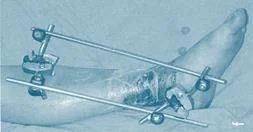
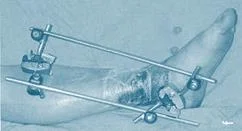
Objectives
- Definition of an open fracture
- Important points in history of an open fracture
- Classification of open fractures
- Management:
- Initial treatment
- Importance of surgical debridement
- Bone treatment - initial & definitive
- Soft tissue coverage
- Factors affecting outcome
Definition of Open Fracture
- A fracture where the skin coverage overlying the fracture is breached even if a small puncture wound
- (Another name: Compound fracture)
- All open fractures, no matter how trivial they seem, must be assumed to be contaminated
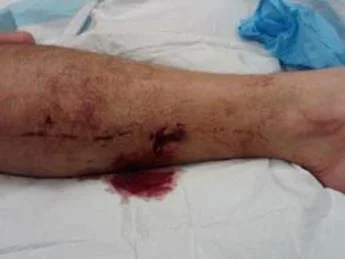
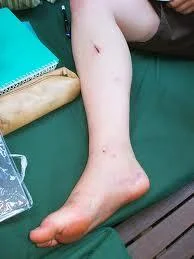
Causes (Types) of Injury
- Assault & firearms: severe
- Crushing under heavy object falling. More soft tissue damage
- Fall: height is important
- Road traffic accident (RTA): severe: Car (MVA), motorcycle, pedestrian
- Sport: stronger impact
Mechanism of Injury
Determine if Injury was Caused By:
- Crushing under objects
- Low velocity / High velocity
Penetrating Missiles
- Low velocity < 300 m/s -
- Damage along the tract
- Comminution
- High velocity: >300m/s -
- Wide soft tissue damage & sever comminution
- Some fragment inside
- Some flip inside
- Vacuum phenomena - cavitation
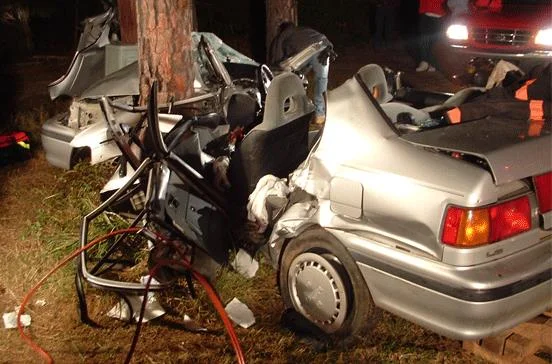
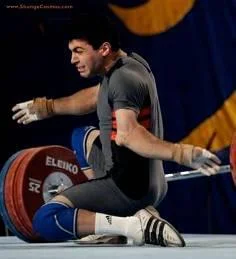
Field of Injury
- Relatively clean
- Contaminated soil



Open Injury From:
- In-out: usually cleaner
- Out-in: more contamination and dirt
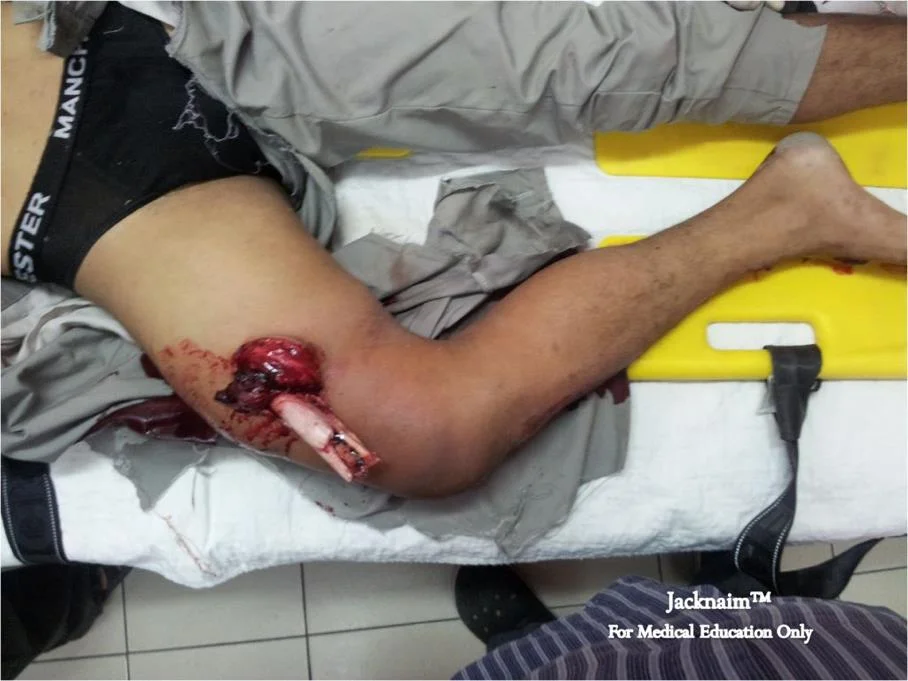
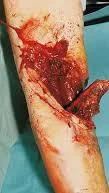
Signs of High Energy Injury
- Extensive de-gloving
- Compartment syndrome
- Crush syndrome
- Bone loss
- Segmental fracture
Examples
Low Energy vs. High Energy
| Low Energy | High Energy |
|---|---|
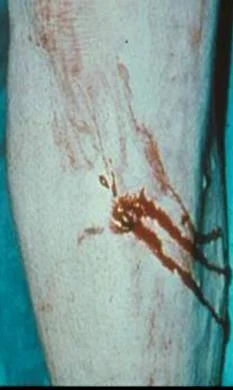 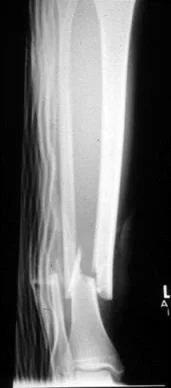 | 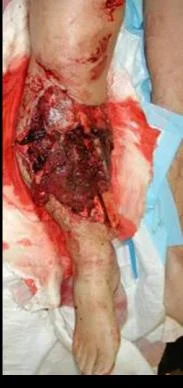  |
Problem of Open Fractures
- Infection (skin is breached)
- Primary from the field
- Massive contamination
- Debris and foreign bodies
- Devitalized tissues
- Secondary infection after internal fixation
- Initial bacterial contamination
- Proper debridement not done
- Internal fixation is a foreign body
- Primary from the field
Higher Infection Rate
- More contamination if:
- Delay > 12 hours
- Exposure to fecal material
- Exposure to oral material
- Exposure to soil or water
- Animal bites

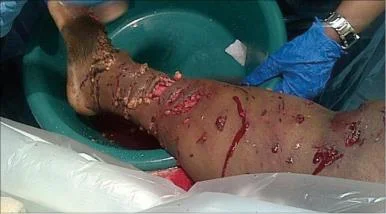

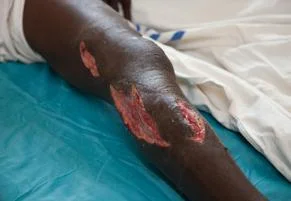

History in Open Fractures
- Mechanism of injury
- Date, time, type, method of impact
- Consciousness
- Size of wound
- Amount of bleeding
- Other injuries: often missed
- Anti-Tetanus status

Management of Open Fractures
- Initial management
- Classifying the injury
- Definitive treatment
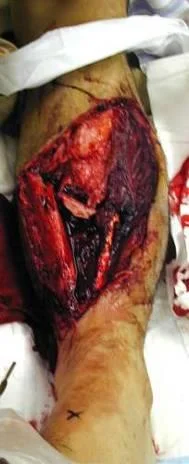

Initial Management
- It is essential that the step-by-step approach in advanced trauma life support not be forgotten
- Treat the patient, not the fracture!
- (ABC) ATLS protocol
- Exclude shock and brain injury
- Vital signs
- must be observed and followed up
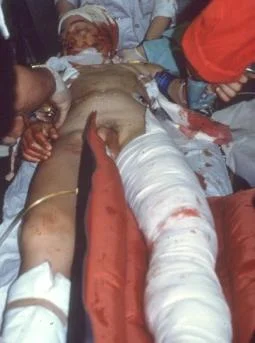
Approach - Clinical Exam
-
Examination of the viscera
- Rib fractures: Injuries to lungs, liver, spleen
- Pelvic fractures: Injury to urinary bladder, urethra
- Head and spinal injury: Neurological examination
-
Look:
- Special attention is to be paid to wounds
-
Feel:
- Sensory /motor deficits
- Pulse distal to injury
- Tense Compartment syndrome
-
Move:
- With care, if necessary! (should splint first)
- When the fracture is ready to be dealt with:
- Inspect the wound
- Remove gross contamination
- Photograph the wound
- Cover with a saline-soaked dressing
- Check limb circulation & distal neurological status
- Splint
Principles of Treatment
- All open fractures, no matter how trivial they seem, must be assumed to be contaminated
- The basic guidelines:
- Antibiotic
- Anti-tetanus prophylaxis
- Urgent and proper wound and fracture debridement
- Stabilization of the fracture – ? External Fixation
- Early definitive wound cover

Primary Surgical Debridement
Demands meticulous excision of all dead and devitalized tissues
- Remove all foreign material
- Trim skin edges
- Remove all dead muscles & lacerated tissues & fully detached small bone pieces
- Preserve N/V !
- Saline wash: 3-6-9 Liters (wash–wash–wash)
Primary Surgery - Debridement
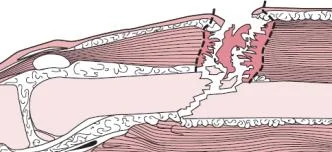
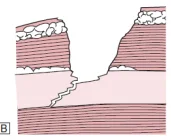
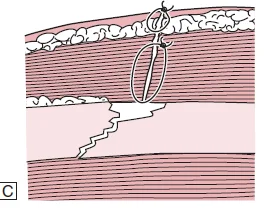
“Dilution is the Solution to Pollution”
Alois Karlbauer

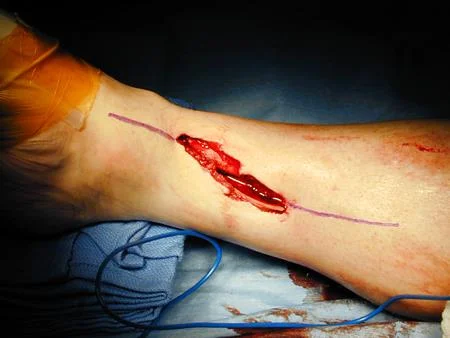


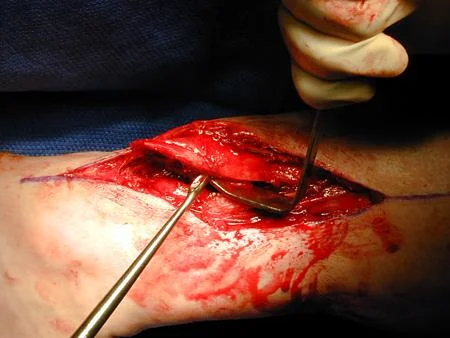
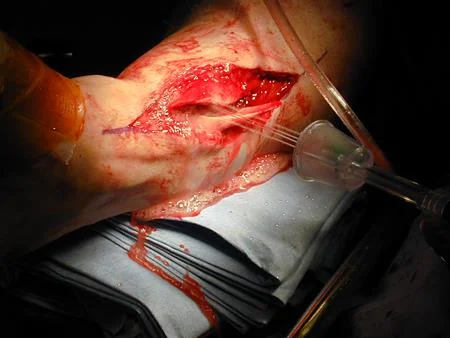
Wound Closure / Bone Fixation
- Both depend on extent of soft tissue damage and contamination
- Primary skin closure and internal fixation
- In small wounds / good soft tissue condition / minimal contamination
- Delayed secondary closure / External fixation
- In larger wounds / bad soft tissue condition / more contamination
- Primary skin closure and internal fixation
Summary
- Definition of open fracture
- Important points in history of an open fracture
- Example of types of energy in open fractures
- Management:
- Importance of early surgical debridement
- Soft tissue management
- Bone treatment initial & definitive